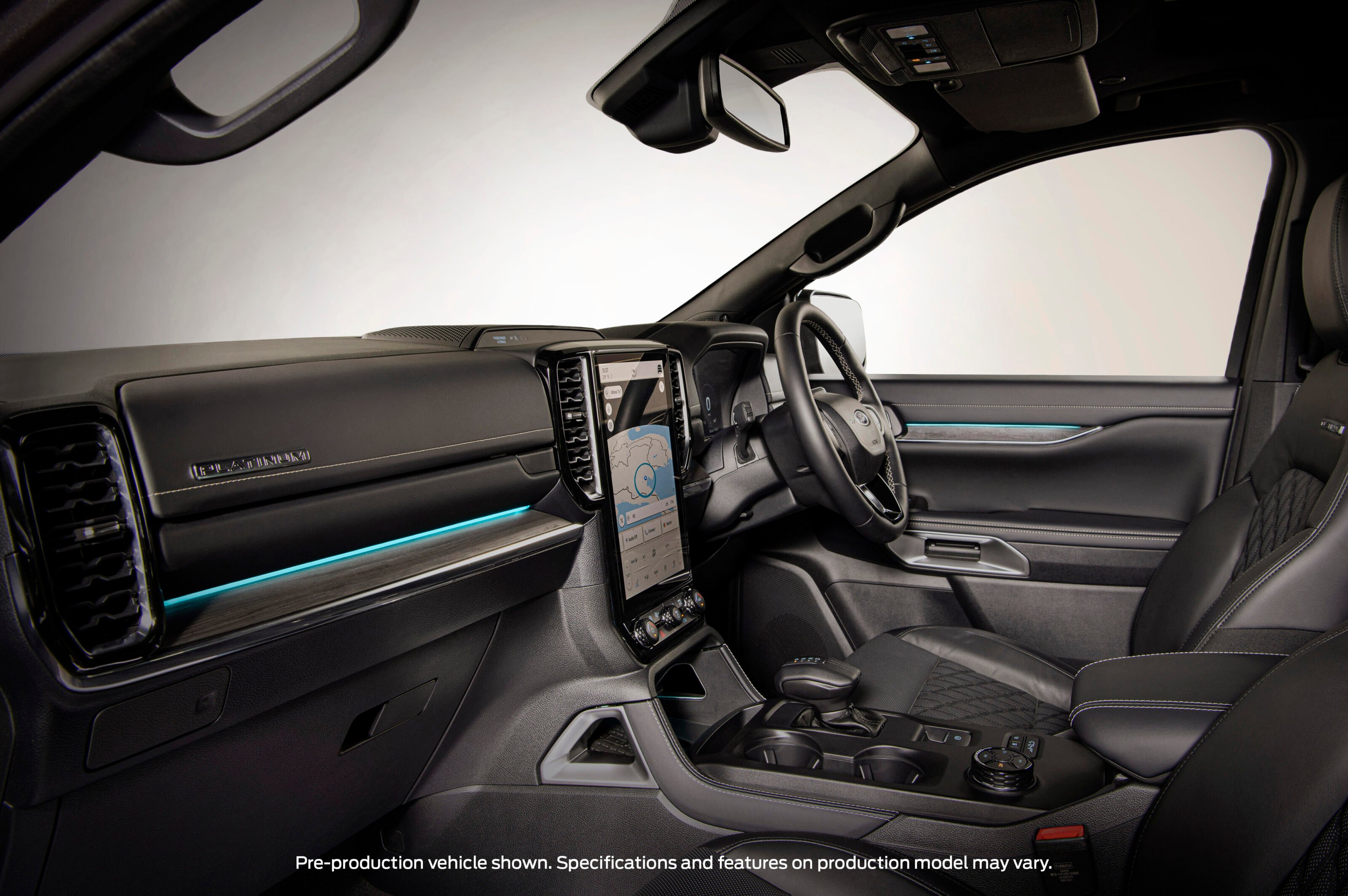Snapshot
- New Everest brings Ranger design cues to SUV
- Updated engine line-up includes range-topping Lion V6 turbo-diesel
- Set to go on sale in the second half of 2022
UPDATE, September 13, 2022: New Ford Everest on sale, and we’ve driven it!
The new-generation 2023 Ford Everest is finally on sale in Australia, and our man Matt Raudonikis has driven it. Get the full story, and our first-drive video, at the link below.

The story to here
The covers have been pulled off the 2022 Ford Everest ahead of its arrival in Australian showrooms in the second half of this year.
It’s the biggest change in the Ford Everest’s history, but can it make an impact in a rapidly changing market, and will it put even a dent in the Toyota Prado’s sales?
Ford’s new Everest delivers a bold new design which freshens the outside and liberates space inside – where there’s upgraded tech, significant changes to its four-wheel drive and suspension systems, as well as greater towing capability courtesy of a new V6.
This substantial engineering and design investment makes the 2022 Everest a significant reboot of Ford’s sole seven-seat SUV offering, which was introduced in 2015 as production of the locally-made Territory wound up. If you want a seven-seat Ford SUV, this is it.
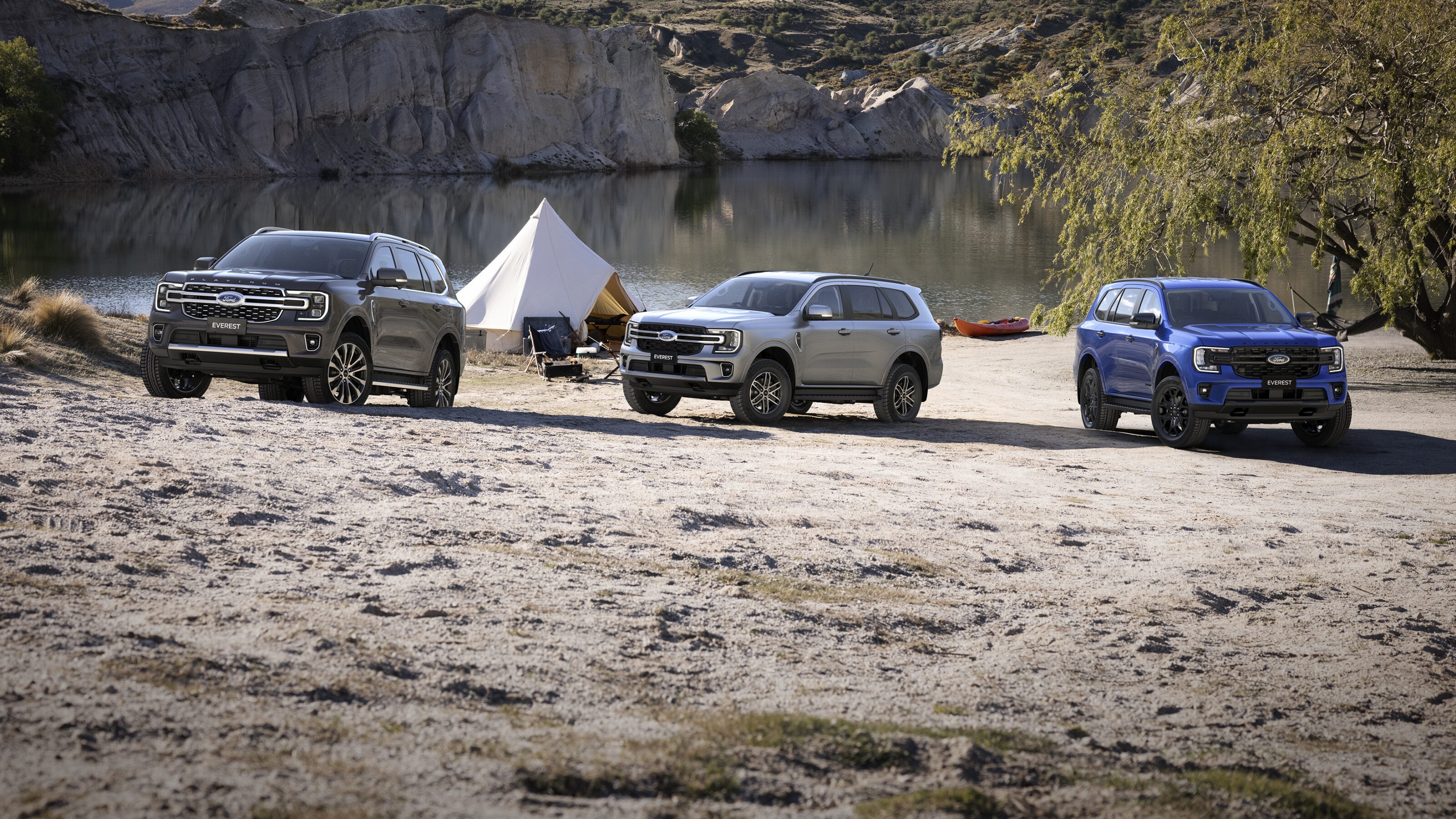
This is also the Everest’s chance to capitalise on its 2023 Ford Ranger underpinnings, now amortised across greater volume, given Ranger’s global proliferation and the introduction of the Bronco in North America. That alone means this should be the best Everest to date – and from what we know so far, it’s stacking up to be exactly that.
“That’s the beauty of doing the platform development at the same time; the building blocks before when we did Ranger, and then the Everest, we added small bits on,” said T6 Chief Platform Engineer Ian Foston.
“This time, we got to do it all at the same time, which gave us that flexibility to match the variants and combinations on the same platform, so it really helped.”
One glance at the new Everest and its Ranger resemblance is immediately obvious, its striking front-end leading to a new overall fullness. There’s a 50 millimetre increase in both front and rear tracks, the wheelbase stretched 50mm to 2900mm too – yet the overall length is near identical (Ford won’t share that number just yet).
Almost every number is up, even marginally: exterior dimensions, cabin space, towing capability, kerb weight, GVM and GCM, as well as the number of cylinders – with a V6 offered in Everest for the first time.
“One of the key tenets of the design was to make it look a lot more planted and a lot more stable,” explained head of exterior design, Lee Cosentino. Yet the clay Everest sitting in front of media at the new Everest’s reveal is evidence of the Monash Uni grad’s talent.
“The width really helps us swell the fenders out and that makes it feel more planted on its wheels,” Cosentino said. “Obviously the vehicle is very capable, so we wanted to really emphasise that through the visuals.”
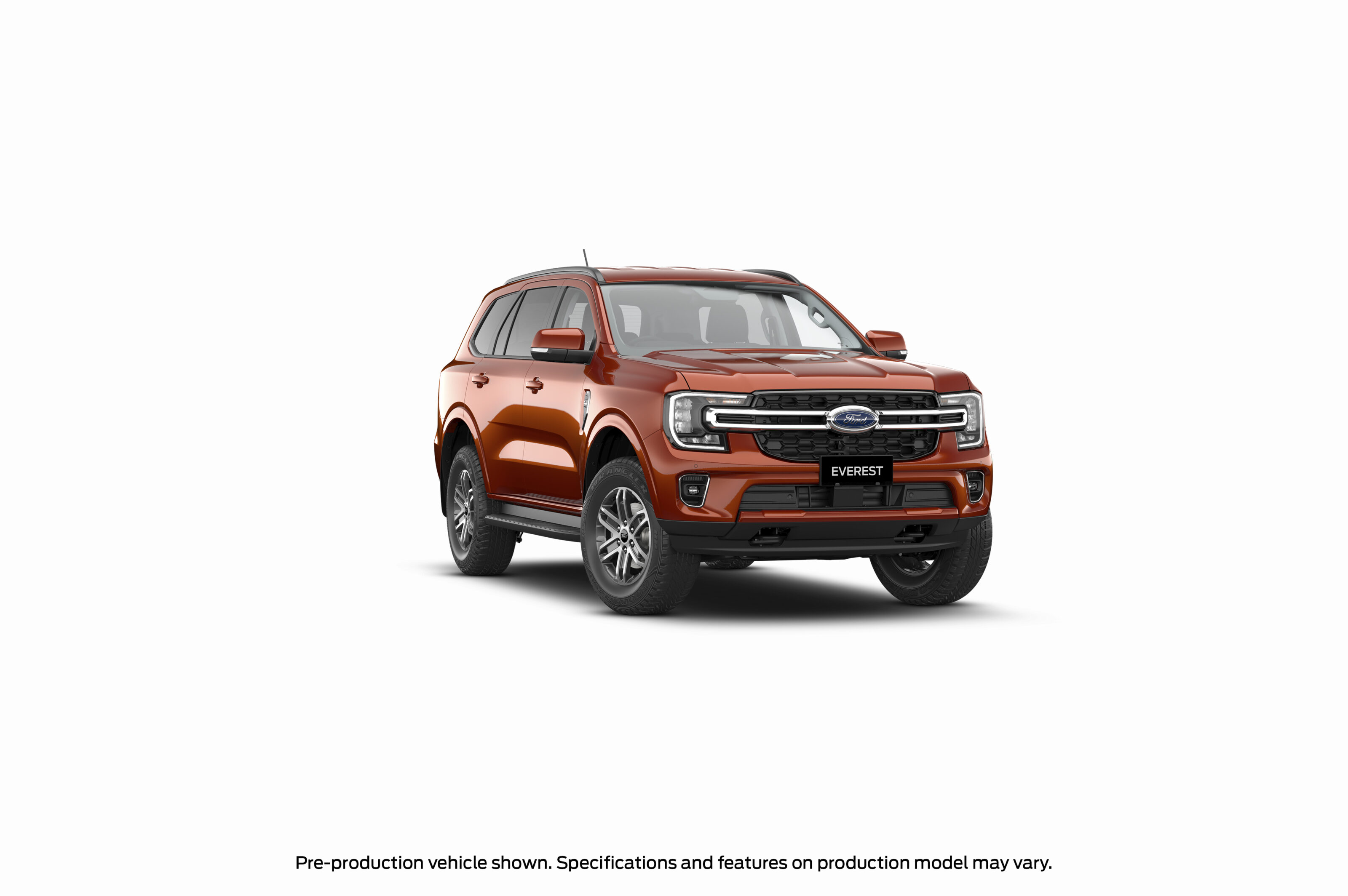
While the front end has a Ranger look about it, with the C-Clamp headlights integrated into a ‘coast-to-coast’ grille – even sharing the same front guards as the new Ranger – things get a little different as the Ranger-like elements develop into Everest’s SUV body, with items such as integrated roof rails and a much steeper rear windscreen.
“The biggest thing for me is actually on the rear end,” says Cosentino. “As you walk down the body side you can start to see that the line on the shoulder swells over the arches, and you can really get this quite strong shoulder.
“The key for the rear end is getting those corners out as far as we can, not only from the bottom, but all the way up to the top. It’s a lot squarer rear end and really does emphasise that roominess that we have within.”
The 2023 Ford Everest’s got a big new V6
Drawing just as much attention as the new design is what’s under the bonnet. The new ‘Lion’ V6 – from the same engine family as the 2.7-litre turbo-diesel in the last Territory – will sit above the 2.0-litre bi-turbo as the Everest’s premium engine option, the bi-turbo taking over the role of the now defunct 3.2-litre five cylinder ‘Puma’ turbo-diesel engine as the mainstay entry-level donk in Australia.
Confirmed as the flagship Everest powertrain from launch in Australia, the 2993cc V6 is an intercooled common rail diesel with 60-degree configuration, iron-graphene block and double-overhead cams.
Ours is likely to be sourced from Dagenham, in the UK, but in North America’s F-Series, the engine has previously included variable geometry turbocharging, a two-stage oil pump and a forged crankshaft – all yet to be confirmed for the Everest, and 2023 Ford Ranger, which will also offer it.
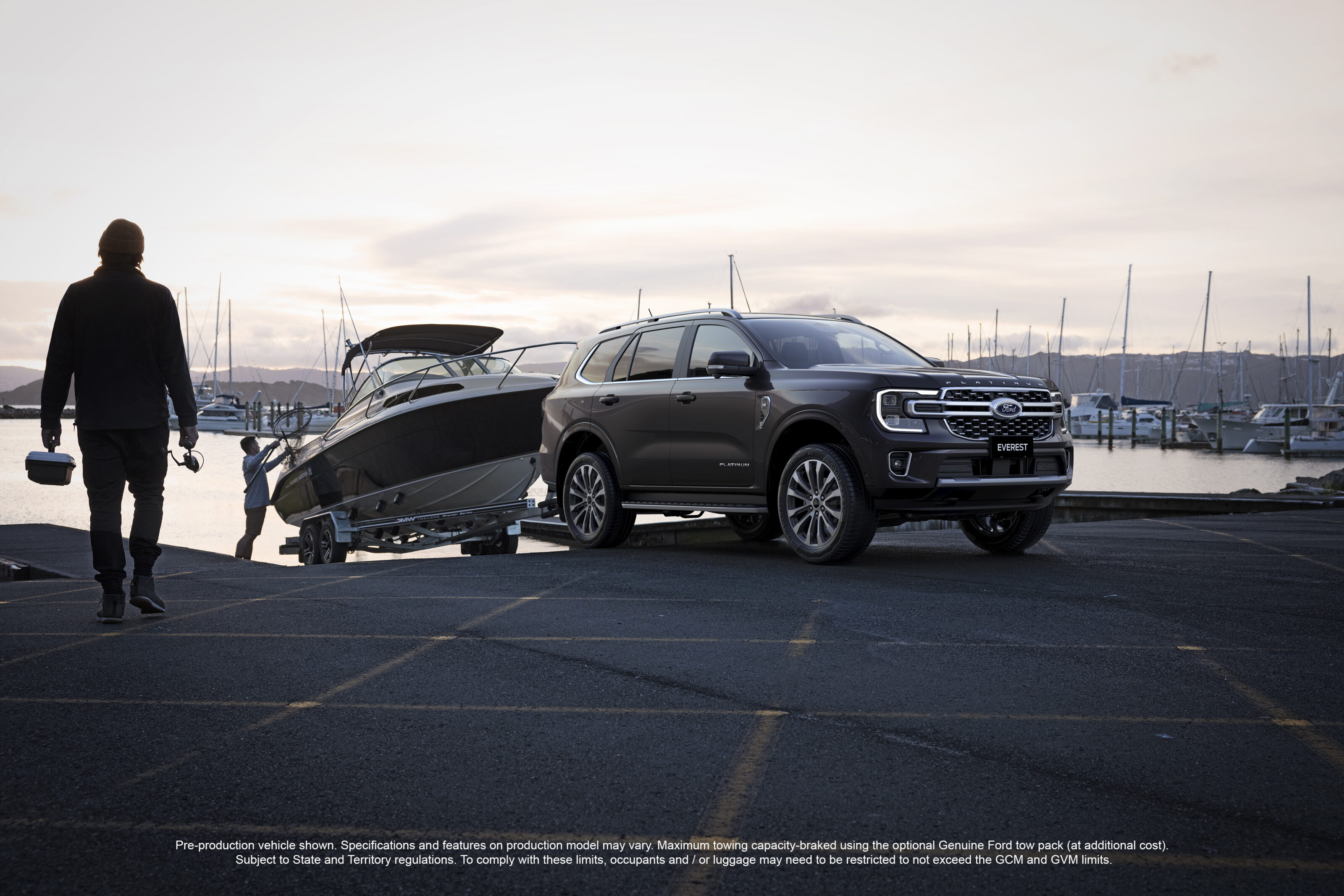
Power and torque are still secret, too, but in the 2018 F-Series the 3.0-litre ‘Power Stroke’ made 240hp (186kW) and 440lb-ft (597Nm) from 1750rpm. It has developed even stronger numbers in other products, but those figures easily eclipse the current Everest’s 157kW/500Nm bi-turbo and 3.2L’s 143kW/470Nm.
Following Ranger and Bronco, the 10-speed will be the new 10R60 in place of the current model’s 10R80, both of which were co-developed with General Motors.
Combined with the new V6, which is heavier than the bi-turbo, according to Foston, fuel economy may be up – as the Everest is facing a marginal weight increase over the current model’s 2283-2477 kilogram weight range.
The 10R80 in current models has been recalibrated several times by Ford Australia engineers to combat low-speed lack of responsiveness – which it says combines with more clutch packs for the four-wheel drive system in the new Everest, too, for better responsiveness both on road and when off-roading.
“The new [four-wheel-drive] system’s got so many features now with the clutch controls in terms of allowing to be released and being able to do manoeuvring, the driveline not binding,” said T6 platform chief, Ian Foston.
Made up of a two-speed transfer case, it retains switchable on-the-fly mode changes, accompanied by six selectable drive modes.
“It’s Borg Warner again, it’s the same company [as before], it’s just the next generation.”

Suspension sees a Watts Link rear end as previously. There’s more articulation and travel which, with the additional modes, should also deliver greater off-road capability. This includes a greater approach angle, with Ford’s coyness on the departure angles suggesting it will be similar to the current Everest, as will water wading which remains 800 millimetres.
There’s also more underbody protection, varying from plastic and metal materials between trim levels.
Interior quality and tech
The perceived quality of the new Everest’s interior is a huge improvement not only achieved by the fresh design, but with more focus on textures and surface changes, even down to the size of the leather grains, for instance.
Trend and Sport Everest add detailed stitching and quilted leather, while the Platinum gains finer leather and additional padding for its front seats. Attention has been paid to the base-level Ambiente, too, with the hard plastics and tackiness of the current car banished for superior materials designed to be durable enough to cope with kids, muddy pets and serious off-roading.
The centre stack is dominated by the 12.0-inch full colour screen (10.1-inch on Ambiente), which has sent most of the switches and buttons in the new interior packing. There are still ADR-mandated buttons – such as the hazards – and customer feedback suggested keeping buttons for air-con, which can be operated by the touchscreen or new, more textured, physical switches.
The centre screen cleverly works together with the drive modes, driver assist technology and the digital instrument cluster.
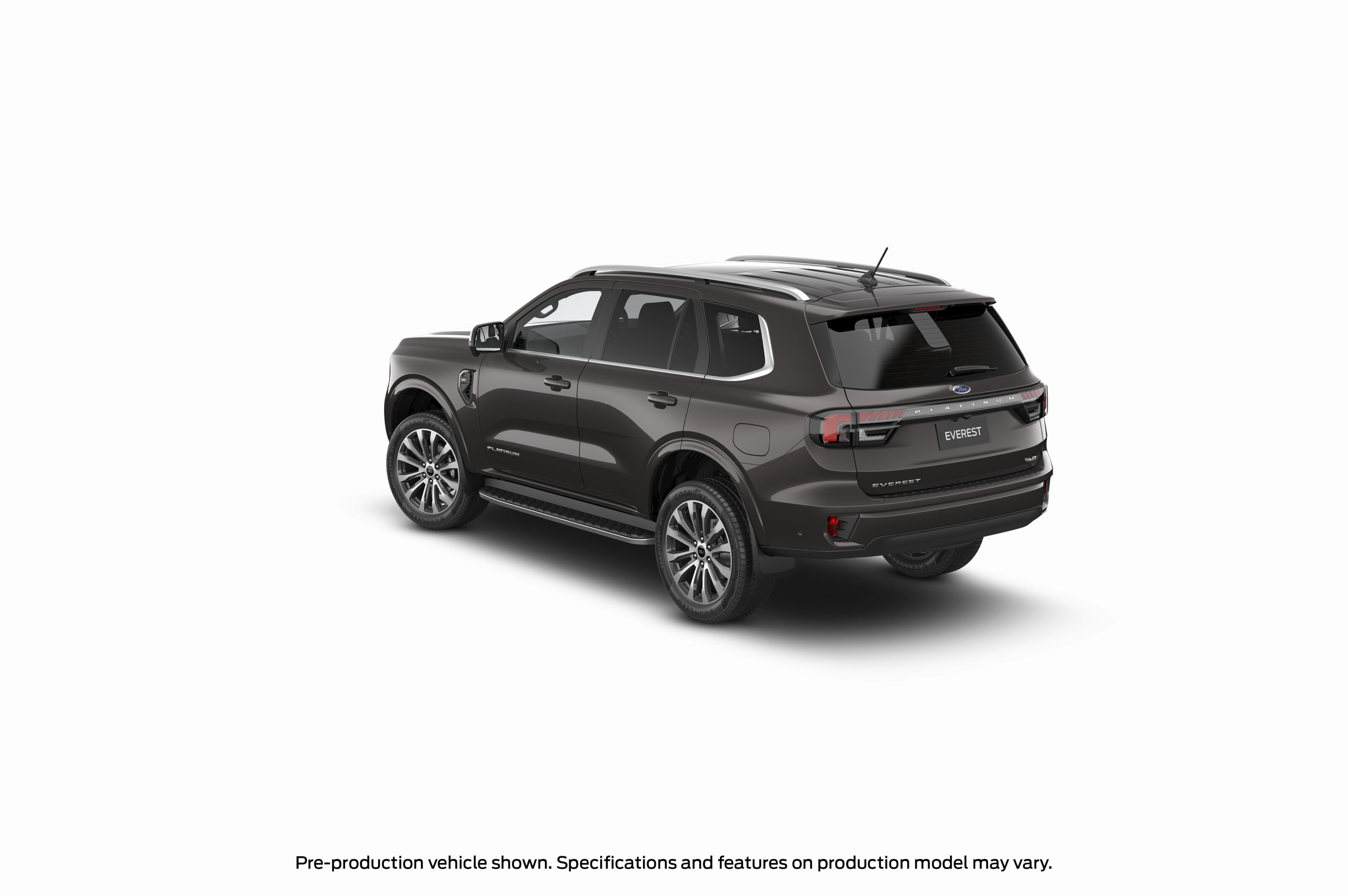
Numerous actions can be carried out via the centre display, which includes a new ‘off-road screen’ that allows front and rear cameras to view low terrain, for example. The camera ensemble enables you to view over a crest, for instance, and better position the vehicle.
There are even on-screen driving guides – reminiscent of ‘racing line’ video game graphics – that can be used to know which way to keep the wheel straight when off-roading at wild angles.
Then there’s the practical elements: Ford’s SYNC4 brings wireless Apple CarPlay and Android Auto compatibility, wireless smartphone charging, USB-C ports and 230V chargers in the cars Wheels was shown, but it’s the clever integration of both accessories and their operation via the centre screen that’s impressive.
2023 Ford Everest safety and assist features
New available equipment includes intelligent adaptive cruise control, lane centring, and rear-cross traffic alert with auto braking (AEB in reverse). That’s in addition to BLIS (blind-spot information system) and AEB, among others.
Combined with up to nine airbags on top variants – including a centre airbag between the front passengers – Everest is expected to achieve a five-star ANCAP rating.
Additional tech includes upgraded park assist, which now operates the gear lever, brake and throttle and is designed to both parallel park and perpendicular park the Everest – it will even drive into and out of a parking spot.
Off-road, there’s also hill descent control, which functions in both directions, while the new Everest also adds a new drive mode – ‘Tow Haul’, as the American vernacular continues to be layered on, for a total of six drive modes.
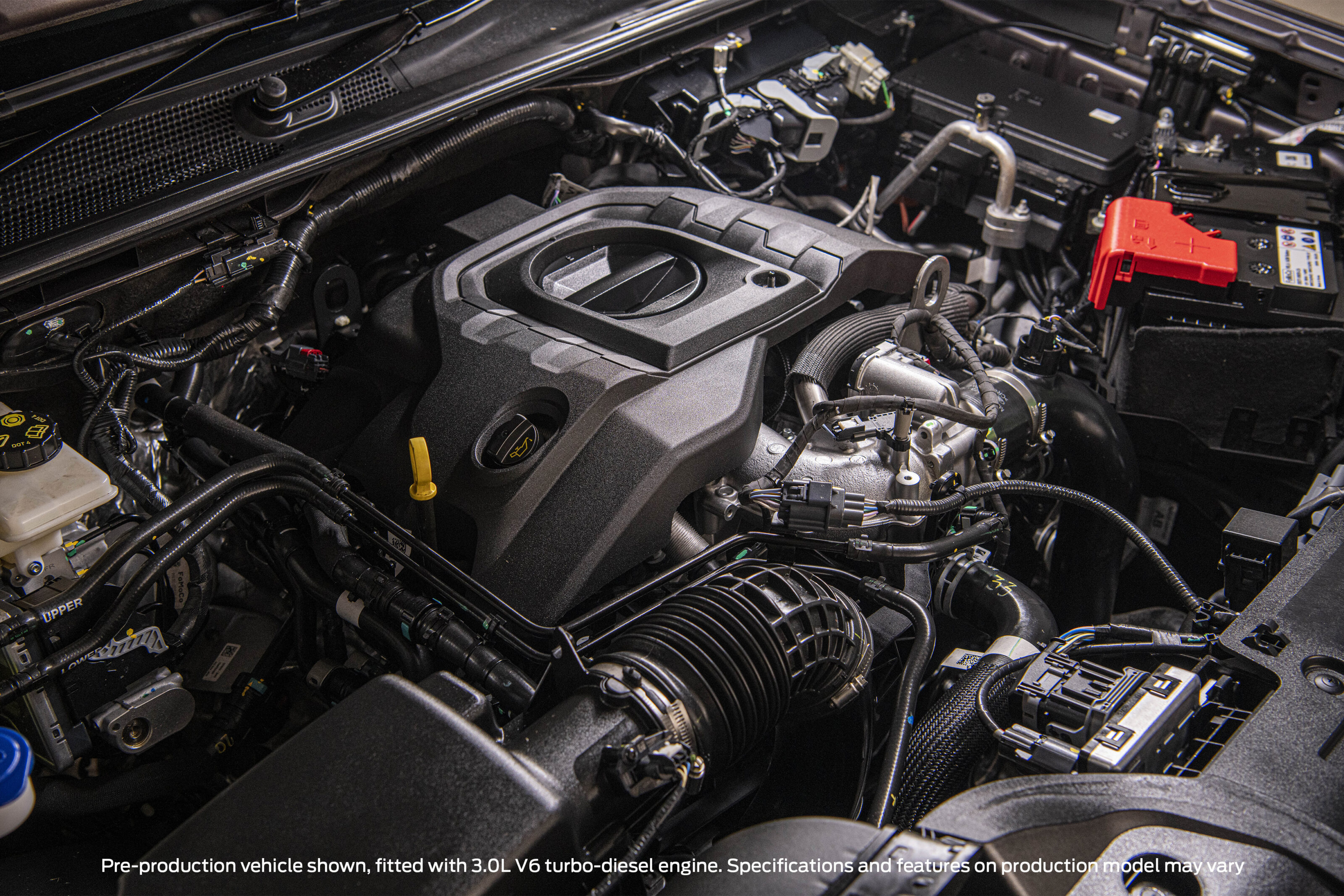
Big, big towing duty
Ford says the new V6 will give the Everest a 3500 kilogram tow rating, significantly more than the current model’s 3100kg for the bi-turbo and 3000kg from the 3.2L. Great news for those looking to tow is that the Everest now comes as standard with integrated trailer-brakes, streamlining the process of tow-readiness.
Foston’s team has taken the opportunity to capitalise on the space liberated by the designers right here the Everest’s USP sits with customers: the second and third rows.
The cargo area is marginally larger in seven-seat configuration, and the interior design team, led by Nick Eterovic, has worked hard on the packaging to include larger third-row pockets to house tablets, a conscious effort on the ‘apple catcher’ on the floor to stop objects rolling around, as well as the ability to fold the seat-rows flat.
The second row too has a new seat design, and of course the front seating is new. “I was obsessed with the command driving position,” said Eterovic. That’s seen greater adjustment of the steering column – a response to direct criticism of the current model.
“We’ve also changed all of the ergonomics of the rear,” says Foston. “How the liftgate opens – we’ve given it as tight a swing as we can, we’ve also made it open quicker and given it more headroom. We’ve done loads of work on the rear to make it much more user-friendly – it’s an area that customers gave us loads of feedback on the current Everest.”
When is the 2023 Ford Everest on sale?
The 2023 Ford Everest is scheduled to go on sale in Australia in the second half of 2022, with pricing and additional details yet to be announced.
We recommend
-
 News
NewsFord commits $1.26 billion to Ranger and Everest manufacturing
The investment will be used to update the factory responsible for building the Ford Ranger and Everest
-
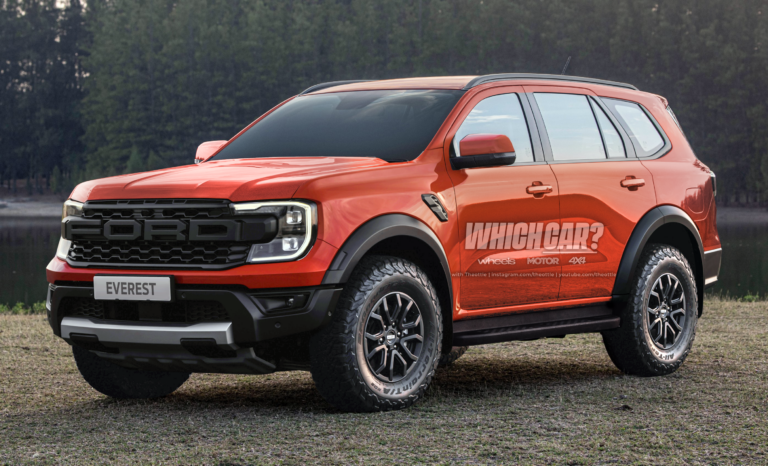 News
News2023 Everest Raptor: Ford Australia keen on powerhouse SUV
Ford Australia wants to see an Everest Raptor, and the not-for-Oz Bronco might be the key

